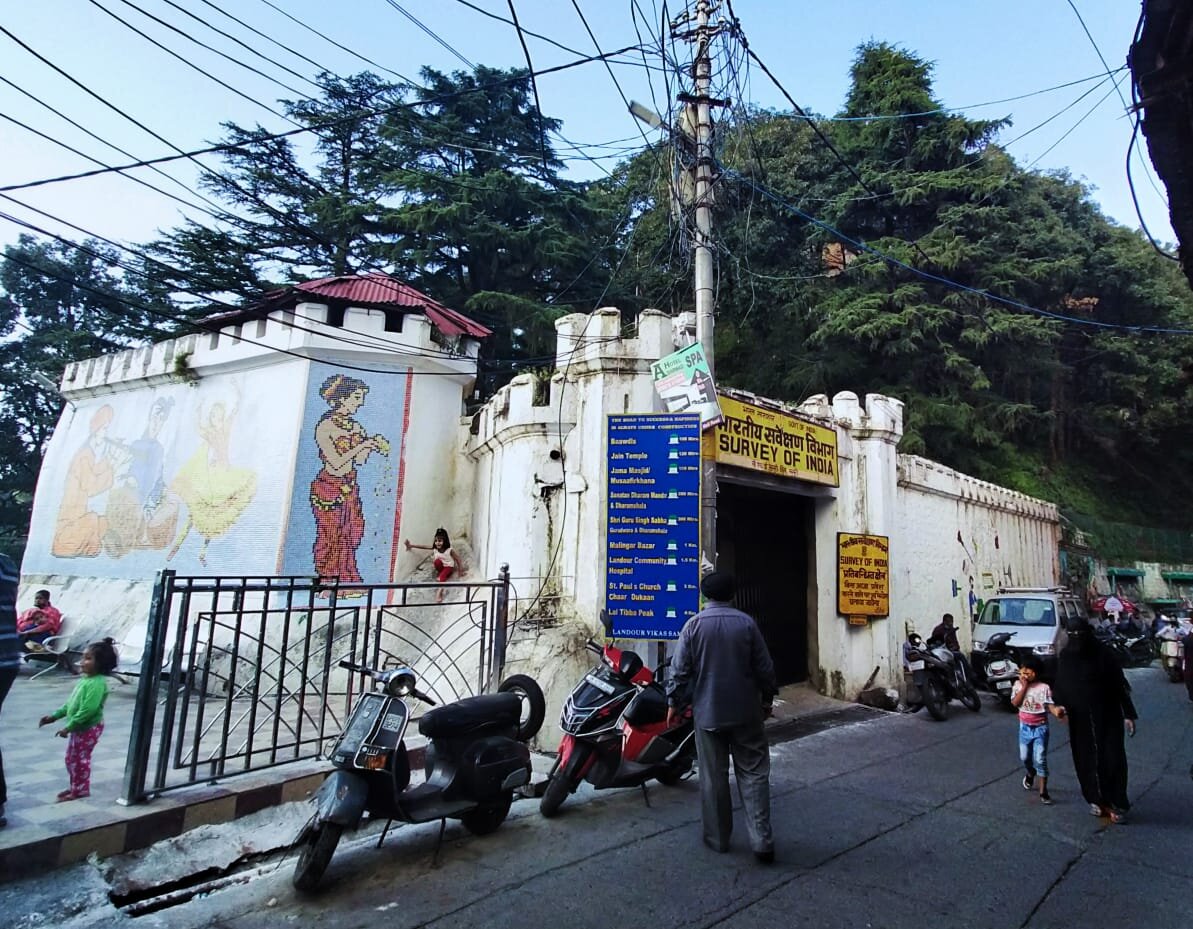Living Memories: A Glimpse of the history at Landour Bazaar
Photo: Gopala Krishna
Photo Gallery: Amidst the gorgeous Himalayan backdrop in the hamlet of Landour (Mussoorie) Gopala Krishna finds strange beauty in the old bazaar, where history has long stood still for the local community.
Places make memories. And no other place is etched as strongly in my memory as the bazaar in Landour, Mussoorie. Having grown up in a hill town in my childhood, the people, places and memories associated with the bazaar have made a remarkable imprint on my mind, and a forever place in my heart.
Photo: Gopala Krishna
I revisited Landour this year during the COVID times, and fell in love with the town and its bazaar all over again. The lockdown ensured that there was no traffic and no crowds, and the bazaar—perhaps after decades—experienced pristine moments of calm and serenity.
Experiences make stories, and stories make a place. And so, this is an attempt to capture the essence of the Landour Bazaar, and share with you in the fervent hope that you, too, shall experience the same joy that I have felt, and fall in love, too, with this special place.
The Landour Bazaar
is my daily haunt.
Each day, I trudge
down the beaten road,
uphill and downhill,
from end to end,
for no other reason but
to savour the sights and smells:
the smell of sweetmeats
and samosas frying,
the sights of zesty shopfronts,
operating from old
and rundown buildings.
And to relish a cup of tea
and hot gulab jamun
in the wayside dukaans.
The Landour Bazaar
Is, for me, a daily call...
Photo: Gopala Krishna
Today a walk through the bazaar is a journey back in time. With its rickety old buildings and battered facades, it is a living museum of the town’s illustrious history.
The Bazaar is a narrow old lane—a charming road winding up the hill—that sprang up more than 150 years to serve the needs of the British soldiers stationed here. Those soldiers are no longer here, but not much not much has changed since they left: the shops are run by the great grandchildren of the original traders who migrated here from the plains, and are still involved in the same businesses or goods/services as their ancestors were a century ago. Today a walk through the bazaar is a journey back in time. With its rickety old buildings and battered facades, it is a living museum of the town’s illustrious history.
A very clear symbol of the bazaar's antiquity is the look of the old wooden doors: beautiful, colourful and decrepit. Rolling metallic shutters have largely replaced the doors, but there are still a few shops still retain these old gateways. With multitude of colours, and textures of wood, the old doors give the bazaar a charming look. The metallic shutters, in comparison, look so drab and monotonous. I wonder too, of how long these last few wooden doors will remain, before making the inevitable switch.
Photo: Gopala Krishna
In these steep and narrow roads, the most convenient way of transporting goods is still on the human back. These sturdy hill men, mostly Nepali or Jaunpuri, were called Faltoos, and would be called upon to transport everything from small chits of messages/letters to heavy pieces of goods and furniture. I have seen some of these people carry things as heavy as refrigerators and cots, climbing up the steep slopes, steadily and gracefully.
The bazaar also treats us with the sheer nostalgia of seeing Bajaj Chetak scooters, either parked or plying on the roads. These vehicles are no longer spotted in the cities—their era is long over and gone—and it's only in the smaller tehsil towns and remote hill stations today that they are found. These scooters, too, have their own charm of history, like antique buildings or vintage furniture.
Photo: Gopala Krishna
The bazaar’s building cling to mountain slopes, and in the monsoons, the winding path remains drenched under the rains for several months. The mists carry the bazaar smells—sweetmeats frying, smoke from charcoal fires, petrol fumes—all mingled with the smells of old buildings and distant pines. The rains bring all of our senses to life.
Now, the advent of autumn has brought along clear skies, mellow sunshine and spectacular sunset. It’s clearly the best time of the year to be in Mussoorie.
Photo: Gopala Krishna
Having spent three seasons here and visiting the bazaar almost daily, I am captivated by the charms of this place, moved by the warmth of the people, and mesmerised by the beauty. Landour has a special place in my heart, and each day I spend here, my love for the place only grows deeper.
“It is always the same with mountains,” said Ruskin Bond, Landour’s most famous author and chronicler of local lore. “Once you have lived with them for any length of time, you belong to them. There is no escape.”
Photo: Gopala Krishna
Photo: Gopala Krishna
Photo: Gopala Krishna
Photo: Gopala Krishna
Photo: Gopala Krishna
Photo: Gopala Krishna
Photo: Gopala Krishna
Photo: Gopala Krishna
Photo: Gopala Krishna
***
Gopala Krishna studied Communications from MICA (Mudra Institute of Communications, Ahmedabad ) and wears several hats, including those of a filmmaker, entrepreneur, writer, teacher, culture-curator, travel and experiential learning facilitator, and more. He is the founder of India Trails, a travel start-up that organizes heritage walks across India. You can find more information on YouTube and Instagram: @indiatrails.















